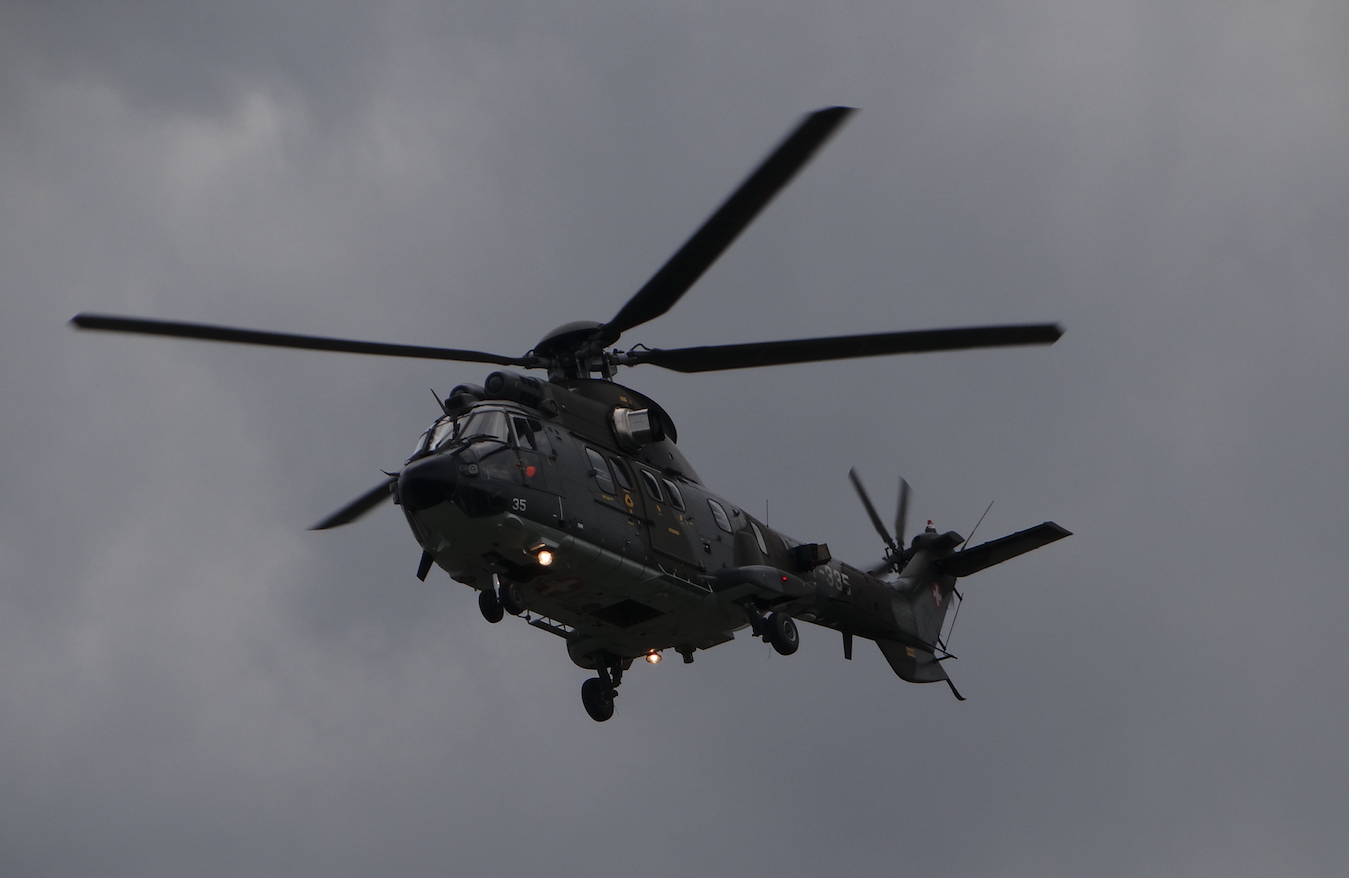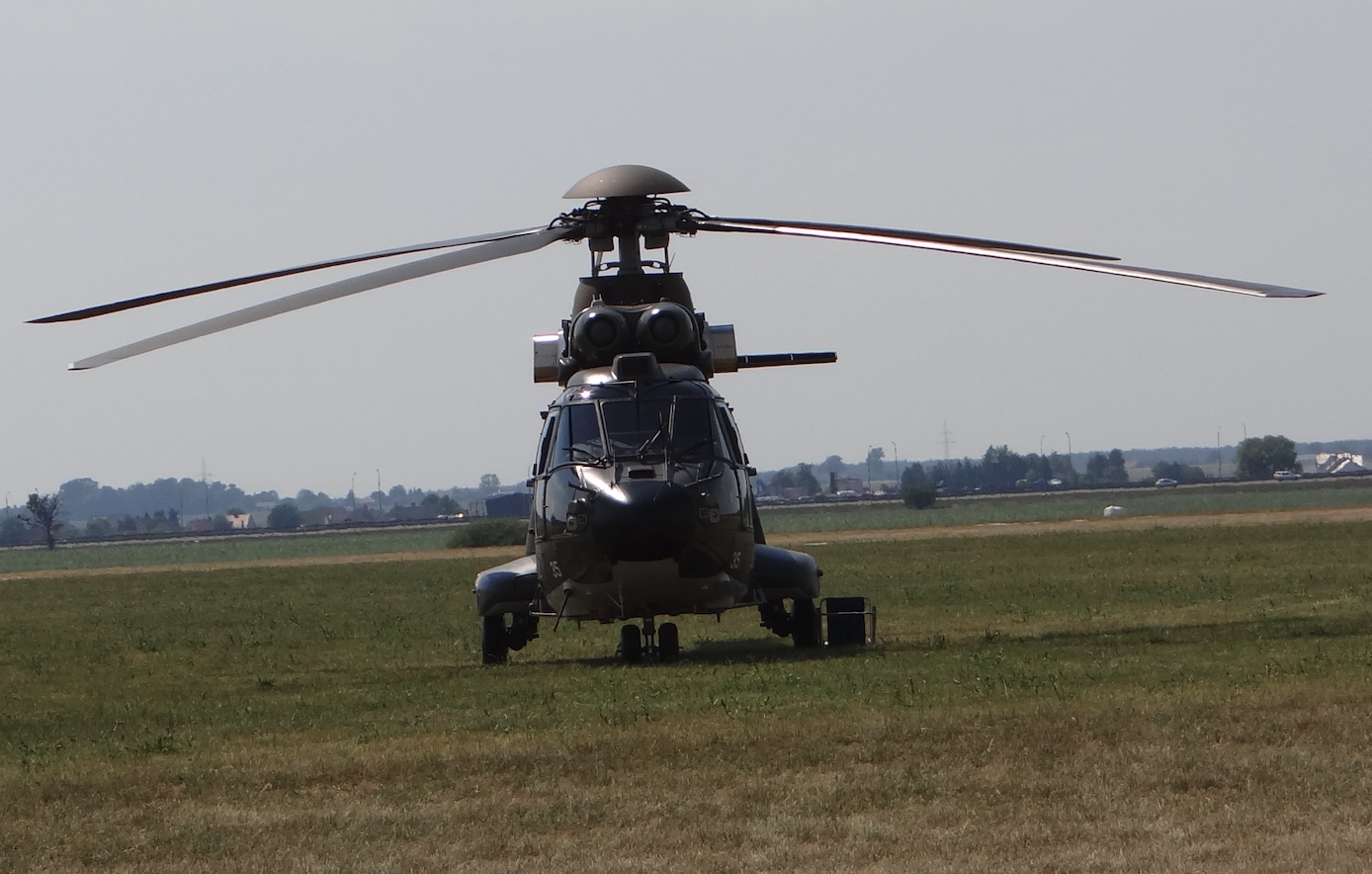Kraków 2021-11-16
Airbus Helicopters Super Puma.
The helicopter in question was developed by the French company Aérospatiale, then by Eurocopter, and now by Airbus Helicopters. The Super Puma helicopter is a development of the original Aérospatiale SA 330 Puma helicopter. The first flight of the Super Puma helicopter was made on September 13, 1978, and its production began in February 1980 and the helicopter is still in production (2021).



Since 1990, the military version of the Super Puma has been marketed under the Eurocopter AS 532 Cougar designation. Since 2004, the civilian version of the helicopter has been marketed as Eurocopter EC 225 Super Puma.
Confusion with the names of the helicopters results from changes in ownership of factories and production rights over 40 years. By 2020, more than 1,000 copies had been built.
The genesis of the Super Puma construction.
In 1974, the French company Aérospatiale began developing a new medium transport helicopter based on the SA 330 Puma helicopter. The design was shown to the public at the Paris Air Show in 1975. Although the new design kept a similar driveline to the previous AS 330 helicopter, it was powered by two new and more powerful Turbomeca Makila turbo engines. The main rotor is four-bladed and the blades are made of composite. The tail rotor is five-bladed. The use of a fenestrone was considered, but wind tunnel testing did not demonstrate the merits of this solution. Much attention was paid to the survivability of the structure on the battlefield and other damage. The fuselage was better developed aerodynamically, especially the front part of the fuselage.
It was planned from the outset that the new rotorcraft would be available in two fuselage lengths; It was a short version of the fuselage that offered a similar capacity to the SA 330 while providing excellent performance in "hot and high" conditions, and a longer version that allowed more cargo or passengers to be carried. At the same time, the military and civil variants were developed.
The Super Puma demonstrator was designated SA 331 and was a rebuilt SA 330 airframe. The first flight was made on September 5, 1977. The first prototype of the Super Puma made its maiden flight on September 13, 1978. Five prototypes were built. In 1980, the production of SA 330 Puma helicopters was completed and the production of SA 332 Super Puma helicopters began.
The SA 332 Super Puma helicopter has become popular and ordered by both the military and civilian entities. Until 1990, the average production rate was 3 helicopters per month. By 2000, the helicopters entered service in 37 countries and approximately 650 helicopters were sold.
The marine version of the Super Puma is adapted to perform anti-submarine and surface missions. In this configuration, the Super Puma was modified with additional corrosion protection, a foldable tail rotor boom, an on-board landing guidance system, sonar equipment and an Omer search radar mounted on the bow. In an anti-surface role, it can be armed with a pair of Exocet anti-ship missiles.
In 2012, a new production line for AS 332 C1 Super Puma helicopters was opened in Brasov, Romania. The C1 index helicopter is a poorer version of the base helicopter intended for poorer markets to compete with the Russian Mi-171 helicopter. Eventually, the helicopter was designated as H 215. It is produced in both military and civilian versions.
More than 15 versions of the specialized Super Puma helicopters have been developed. There are versions: for VIP transport, police, special forces, land forces, medical, NAVY, SAR.
The construction Super Puma.
The helicopter is completely metal and has a semi-shell structure. The retractable tricycle undercarriage is designed to absorb high energy when hitting the ground.
The helicopter's propulsion system consists of two Turbomeca Makila 1A1 turboshaft engines, which drive a four-bladed main rotor and a five-bladed tail rotor. Fuel is contained in six internal fuel tanks. It is possible to hang additional external fuel tanks.
Access to the main hold is provided by two sliding doors. The shorter version can accommodate 15 passengers and the longer version can accommodate 20 passengers. Access to the cockpit is provided by two side doors. The cockpit is equipped with dual flight controls. The basic instrumentation consists of four multifunctional liquid crystal displays along with two displays and autopilot control panels. Third-party companies have offered various enhancements for the Super Puma, including integrated flight management systems, global positioning systems (GPS) receivers, digital map display, flight data recorders, collision warning system, night vision goggle compatibility, connectivity systems. The helicopter is equipped with heating and ventilation.
Data T-T AS 332 (1994 year):
A crew of two pilots. Payload weight 4,490 kg (9.899 lb). Hull length 16.79 m (55 ft 1 in). Main rotor diameter 18.7 m (61 ft) or 16.2 m (53 ft 2 in) depending on blade used. Height 4.97 m (16 ft 4 in). Curb weight 4,660 kg (10,274 lb). Maximum weight 9,150 kg (20,172 lb). 2 × Turbomeca Makila 1A1 engines, with a power of 2 x 1,376 kW (2 x 1,845 hp). Top speed 277 km / h. Range 851 km (529 mi; 460 nm). Operating ceiling of 5,180 m (16,990 ft). Rate of climb 7.4 m / s (1,460 ft / min).
Written by Karol Placha Hetman
